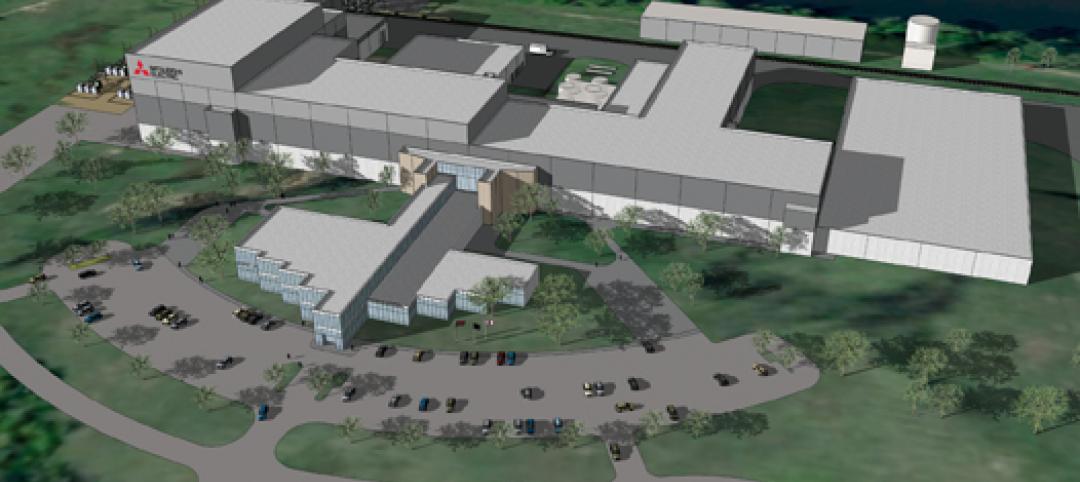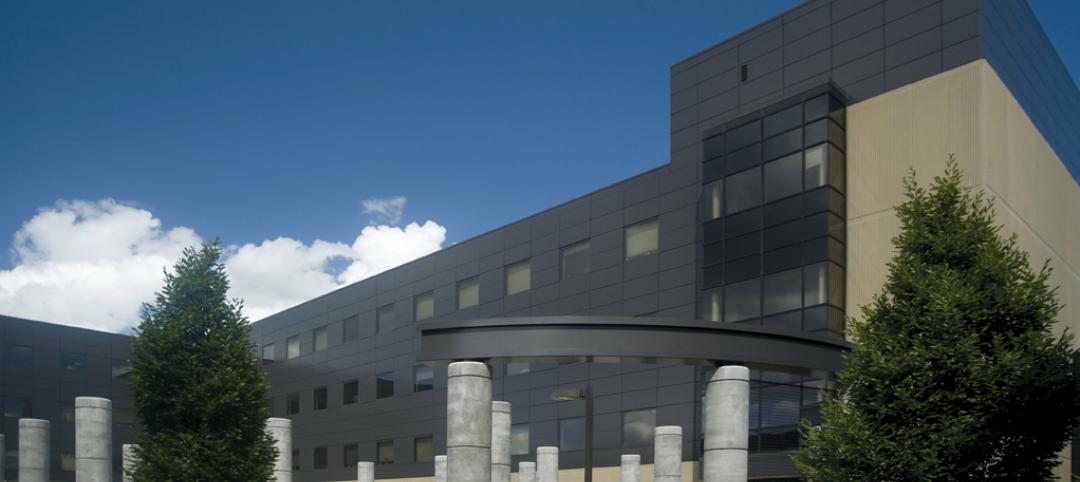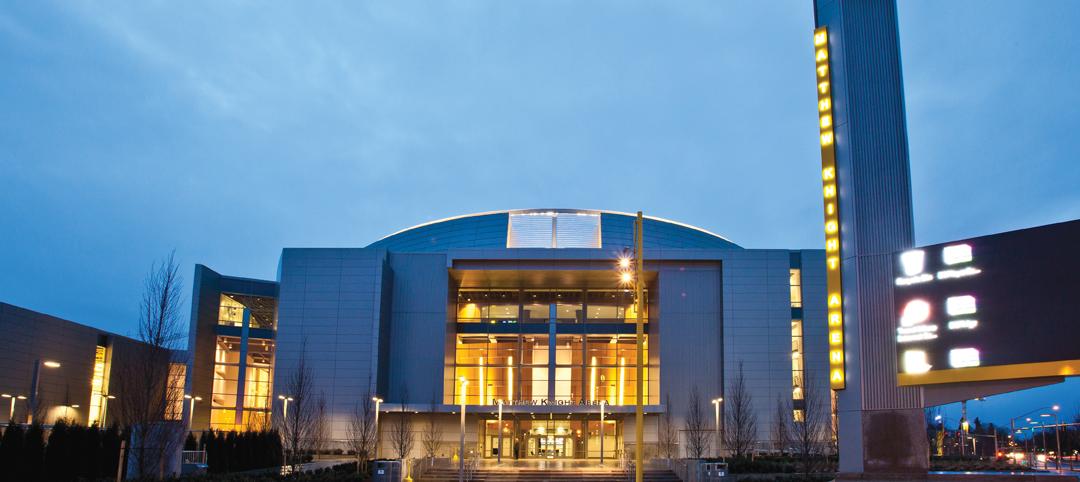To the unndoctrinated, the construction industry conjures images of hard hats and ditch digging. In my years of experience speaking with teachers, students, and up-and-coming generations of workers, time and time again they are surprised to learn that a career in construction can be so much broader and more fulfilling than the stereotypes associated with the trade.
While the industry has made great strides to move beyond a stereotypical view of careers in construction, there is still work to be done to attract, and more importantly, retain, talented workers. Younger generations aren’t just interested in a job, they are seeking career opportunities. They desire to grow, engage meaningfully in their work, and be passionate about what they’re doing. They also want to have a say and be heard.
Flipping Construction Mentoring on Its Head
There’s a unique opportunity for the construction industry to leverage reverse mentorship to retain workers and prepare them for leadership roles while challenging the thoughts and actions of current leaders to improve the culture and operations now and in the future.
Everyone’s familiar with mentorship, where a more senior-level staffer imparts his or her years of wisdom, experience, and council to a younger colleague. Reverse mentorship recognizes that the younger generation has something to offer, too. The added benefit of reverse mentorship is helping seasoned professionals develop new skills, stay connected with younger generations, and gain future-forward insights for life and business.
Relationships between senior and young professionals can be an eye opener for both parties with some crucial benefits supporting today’s business challenges.
Expanding awareness of operations and opportunities. We’ve all heard the saying ‘you don’t know what you don’t know.’ All too often, there’s an information gap between junior and senior staffers, with the junior staff only getting a limited view of the business or projects and senior staffers not fully understanding the breadth of talent on the bench.
Reverse mentoring relationships help connect the dots between junior staffer’s skills and interests and opportunities that they may not have even realized existed in construction. When they know about the possibilities, they can begin to take control and be purposeful in driving their career toward the achievement of a specific goal.
Taking the time to learn more about what young team members are capable of and have interest in, allows senior leaders to identify areas of interest and tailor learning opportunities accordingly. Exposing junior staffers to more prepares them to tap into, and eventually step into, a host of roles. This can be an important part of succession planning.
Room for Diverse Perspectives. Reverse mentoring creates space for diverse perspectives to be heard. Women are the most underrepresented members of the construction workforce. And attracting more women to the construction industry has been a long-standing struggle. The intimate nature of a mentoring relationship makes it possible to dig a little deeper to draw out fresh perspectives and help minority members of the company feel valued and heard.
Creating new pathways to problem solving. As more diverse workers come into the construction industry, with them comes new and valuable perspectives and ways of thinking. It’s crucial to draw those perspectives out and give them space to grow.
Reverse mentoring exposes senior professionals to fresh thinking about the future. Inevitably, we enter ruts and get stuck. We do what we know and what’s comfortable rather than challenge assumptions. Companies that want to improve will seek input from fresh sources: young, old, male, female. No idea is a bad one. Make every meeting and conference room a safe place to elevate new thinking.
This way of approaching problems has served Compass Datacenters well, resulting in major changes that were hard to implement at the outset but serve customers well in the long run.
Advice for implementing reverse mentorship in construction
Start Small. One of the biggest pieces of advice for mentoring of any kind is to know your limits and don’t overcommit. Each season will have a different set of priorities and time restrictions. Be realistic about your schedule and how much time you have available to dedicate to your new relationship. If you don’t have the capacity to commit to attending evening seminars or professional events, consider an in-person lunch or coffee that aligns with your work schedule.
Find the right match for you. It’s important to connect with someone who shares your professional passions; these could be hard or soft skills. Finding the right match for reverse mentorship is all about growing a relationship with someone you respect and connect with. The best mentorship relationships aren’t necessarily between those within the same segment of the industry either. Learning about other areas helps both parties better understand the bigger picture and how each area is connected.
Be authentic and ready to learn. The most important component of reverse mentorship is the relationship itself. In a recent Breaking Glass podcast (a production of Compass Datacenters), I spoke with a colleague about the importance of building your personal board of directors—a group of professionals you can turn to for advice and counsel. In many ways, reverse mentorship is an opportunity to build your board and get well rounded input from colleagues.
The construction industry benefits from relationships and communication. What makes reverse mentorship truly successful is 1) a willingness to be authentic, 2) the act of sharing why you love what you do, and 3) staying interested in hearing other people’s stories.
As the industry continues to grow, it’s critical to prioritize relationships and continuous learning. The best way to prepare for the future of the construction industry is to build relationships with and learn from the next generation.
ABOUT THE AUTHORS
With more than 30 years of experience in the construction industry, Nancy Novak brings extensive expertise in oversight and responsibility for Profit and Loss. In her current role as Chief Innovation Officer for Compass Datacenters, her focus is cutting edge technology, lean practices, and innovative culture through diversity of thought to add value, improve return on investment, and disrupt the construction industry. Nancy serves on the Board of Directors for Weston Solutions, a global environmental firm. She is heavily involved in organizations that lead the way for technological advancement in the construction industry, and she is an advocate for women’s leadership. Nancy currently serves as the Board of Director Vice Chair on the National Institute of Building Sciences BIM Council, as well as Executive Sponsor for the Digital Divide on the iMasons Advisory Board. She is also the host of the “Breaking Glass” podcast, which features Nancy’s dynamic conversations with prominent women in the technology industry—a forum where these accomplished women offer insights, advice and inspiration that listeners can apply to their own professional lives.
Tiffany English is Senior Director, Architecture for Qualcomm Incorporated. Qualcomm is the world’s leading technology innovator. With Real Estate Assets over 12 Million square feet in 30 countries and 40,000+ employees globally. Qualcomm’s breakthroughs in 5G are making the world more connected while making an impact on society and world’s biggest challenges. Tiffany’s role at Qualcomm is oversight of the companies architectural, interior design, space planning, facilities planning, lab planning and MEP engineering teams globally. Tiffany has more than 24 years of industry experience and has overseen, designed, and managed over 7 million square feet of projects for commercial real estate and Fortune 500 clients. Tiffany is currently serving as Immediate Past President of CREW Network, 2021. CREW Network represents 75+ markets and over 12,000 members globally. CREW Network continues to transform the commercial real estate industry by advancing women globally.
Related Stories
| Apr 12, 2011
Mitsubishi commissions electric power manufacturing plant in Memphis
Greenville, S.C.-based design and construction firm O’Neal Inc. is providing design, engineering, procurement, and construction services for Mitsubishi Electric Power Products.
| Apr 12, 2011
BIM Grows Up: Separating Hype from Reality in a 3D World
While BIM adoption still lags in both design and construction, some enterprising owners, architects, and contractors are unlocking the potential of this dynamic technology.
| Apr 12, 2011
Metal cladding: Enhancing design with single-skin panels, MCMs, and IMPs
Single-skin metal panels, metal composite panels, and insulated metal panels can add both aesthetic and functional value to your projects, if you use them correctly.
| Apr 12, 2011
American Institute of Architects announces Guide for Sustainable Projects
AIA Guide for Sustainable Projects to provide design and construction industries with roadmap for working on sustainable projects.
| Apr 5, 2011
What do Chengdu, Lagos, and Chicago have in common?
They’re all “world middleweight cities” that are likely to become regional megacities (10 million people) by 2025—along with Dongguan, Guangzhou, Hangzhou, Shenzhen, Tianjin, and Wuhan (China); Kinshasa (Democratic Republic of the Congo); Jakarta (Indonesia); Lahore (Pakistan); and Chennai (India), according to a new report from McKinsey Global Institute: “Urban World: Mapping the economic power of cities”.
| Mar 22, 2011
San Francisco ready to test hiring law
San Francisco's new construction law, billed as the nation’s toughest local hiring ordinance, establishes strict requirements for how many work hours on city-financed projects must be completed by city residents, starting with 20% this year. It also requires that a set percentage of hours be performed by low-income workers. The requirements apply to municipal construction projects worth more than $400,000 within 70 miles of the city.
| Mar 15, 2011
Passive Strategies for Building Healthy Schools, An AIA/CES Discovery Course
With the downturn in the economy and the crash in residential property values, school districts across the country that depend primarily on property tax revenue are struggling to make ends meet, while fulfilling the demand for classrooms and other facilities.
| Mar 11, 2011
University of Oregon scores with new $227 million basketball arena
The University of Oregon’s Matthew Knight Arena opened January 13 with a men’s basketball game against USC where the Ducks beat the Trojans, 68-62. The $227 million arena, which replaces the school’s 84-year-old McArthur Court, has a seating bowl pitched at 36 degrees to replicate the close-to-the-action feel of the smaller arena it replaced, although this new one accommodates 12,364 fans.












